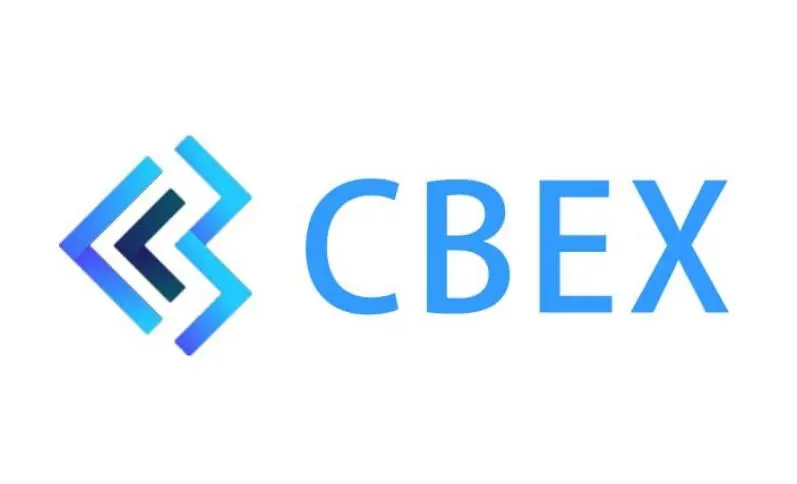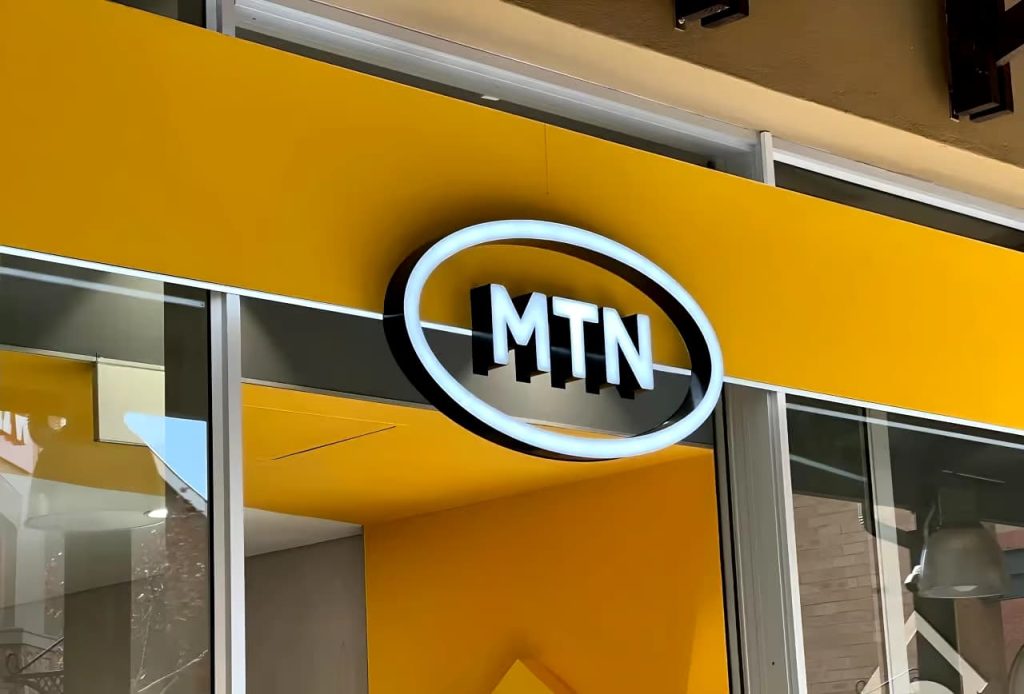We trace the history of Trump’s tariffs so far, and all the attending dramas.

The Art of the Tariffs
President Trump’s tariffs go back to his first term. In 2018 he imposed tariffs on steel and aluminium imports from various countries. This initial move would trigger a broader trade war, particularly with China. They have been a choice tool for his “America First” agenda. At one point, he used the threat of tariffs to strongarm other countries into accepting repatriated immigrants. He also used tariffs to threaten Canada into becoming part of the United States. He promised the return of the tariffs in his inaugural speech.
On February 1, 2025, he followed up on his promise and announced a 25% tariff on most Canadian goods, including an additional 10% on Canadian oil and gas. A 145% tariff was imposed on all Chinese goods imported into the US and a 25% tariff on all Mexican goods. Among many others.
Apparently, these did not produce the intended effect and on April 2, 2025, Trump introduced a 10% universal duty on all imported goods from all countries, effective April 5, 2025. He also invented what he claimed were “reciprocal” tariffs of 11%-50% on 57 countries, effective April 9, 2025. Included in the tariffs were uninhabited territories like Heard Island and McDonald Islands.
Justifying the Tariffs
The White House published a factsheet that framed Trump’s arguments around the tariffs. According to the factsheet, the “tariffs are necessary to ensure fair trade, protect American workers, and reduce the trade deficit.” It continues, “These tariffs adjust for the unfairness of ongoing international trade practices, balance our chronic goods trade deficit, provide an incentive for re-shoring production to the United States, and provide our foreign trading partners with an opportunity to rebalance their trade relationships with the United States.”
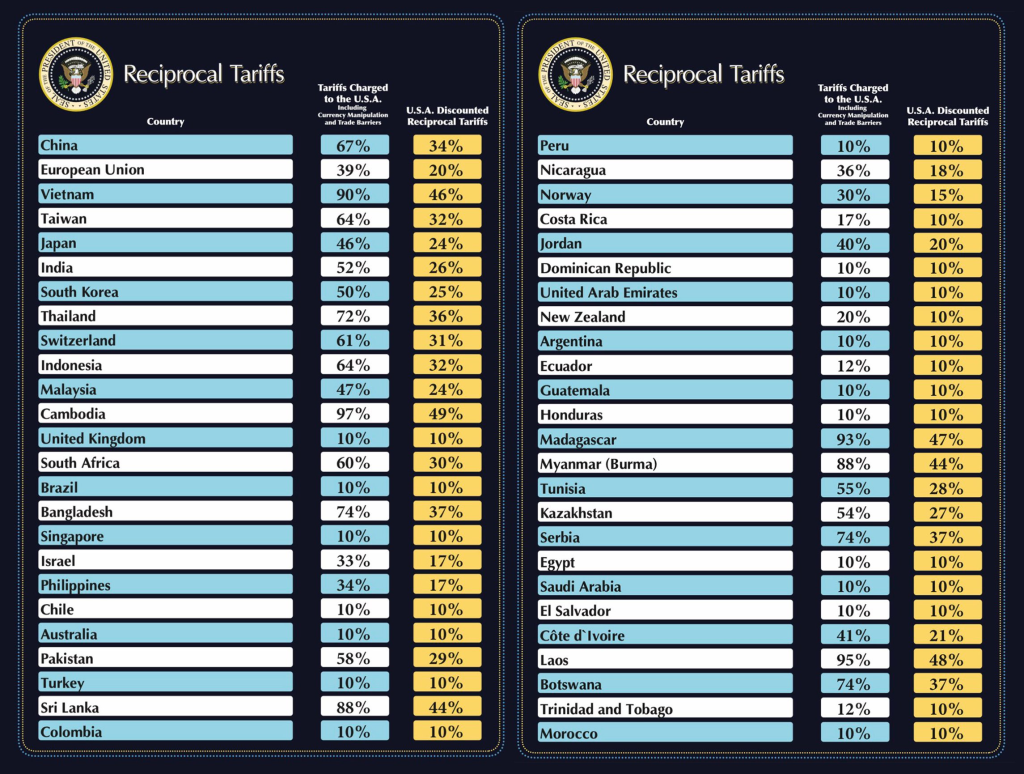
The tariffs were intended to help reduce the trade deficits between the US and other countries and reverse, if not halt, America’s loss of domestic manufacturing. In Trump’s own words, they would stop other countries’ ripping off the US. In his address to a joint session of Congress, he would fire shots at manufacturers: “If you don’t make your product in America, however, under the Trump administration, you will pay a tariff and in some cases a rather large one.”
Other arguments for the tariffs included it being used to hold Canada and Mexico accountable for drug trafficking and illegal immigration. The most preposterous was that America was being cheated and that tariffs would impose fairness. “I’ve decided for purposes of fairness that I will charge a reciprocal tariff,” Trump said. “It’s fair to all. No other country can complain.”
In light of the cure-all effect that tariffs would have on America’s problems, April 2, the day the tariffs were announced, was dubbed Liberation Day.
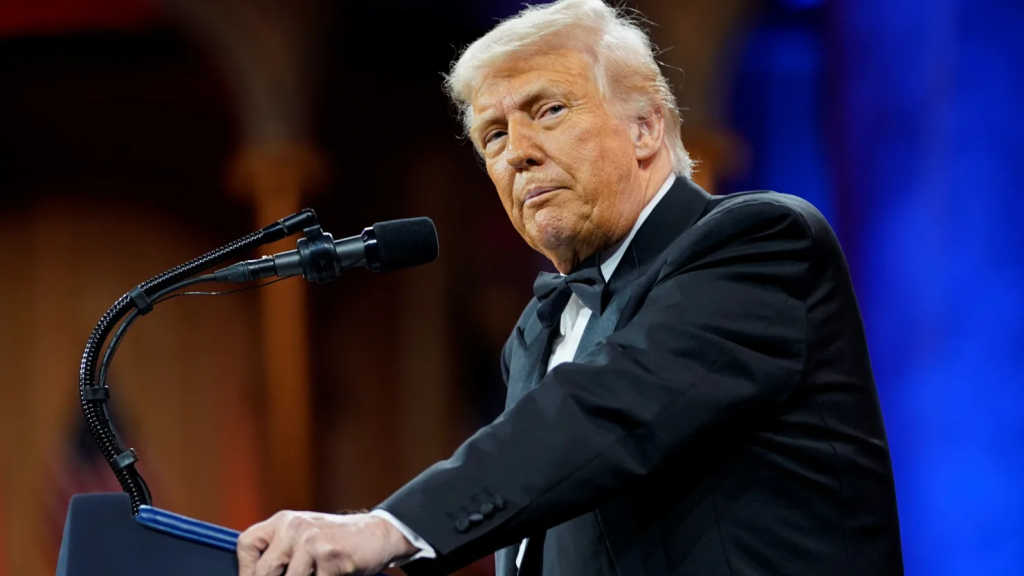
Chaos Ensues
To observers, they were Trump’s tariffs, issued unilaterally and as described by Sen. Elizabeth Warren “with no planning and no rhyme or reason to the numbers.” She predicted that the tariffs would lead to economic chaos. And swiftly came the chaos.
On April 3, 2025, the S&P 500 fell by 4.88%, losing 274 points. The following day, on April 4, it dropped another 5.97%. The Nasdaq Composite saw declines of 5.97% and 5.82% on those days, respectively. The Dow Jones Industrial Average fell 3.98% on April 3 and 5.50% on April 4. Over these two days, U.S. stocks lost a staggering $6.6 trillion in value, marking what was the largest two-day loss in history.
International markets were also hit hard. Japan’s Nikkei 225 index dropped 2.8% on April 2 and 8.03% on April 7, triggering a circuit breaker, while Europe’s FTSE 100 fell 1.6%, the CAC 40 dropped 3.3%, and the DAX declined 3.1% on April 2. The Federal Reserve responded by lowering its 2025 growth forecast from 2.1% to 1.7%, and the OECD projected 2.2% growth for 2025 and 1.6% for 2026. Inflation expectations also rose, from 2.5% to 2.7%, reflecting concerns about higher import costs.
In layman’s terms, everything went red.
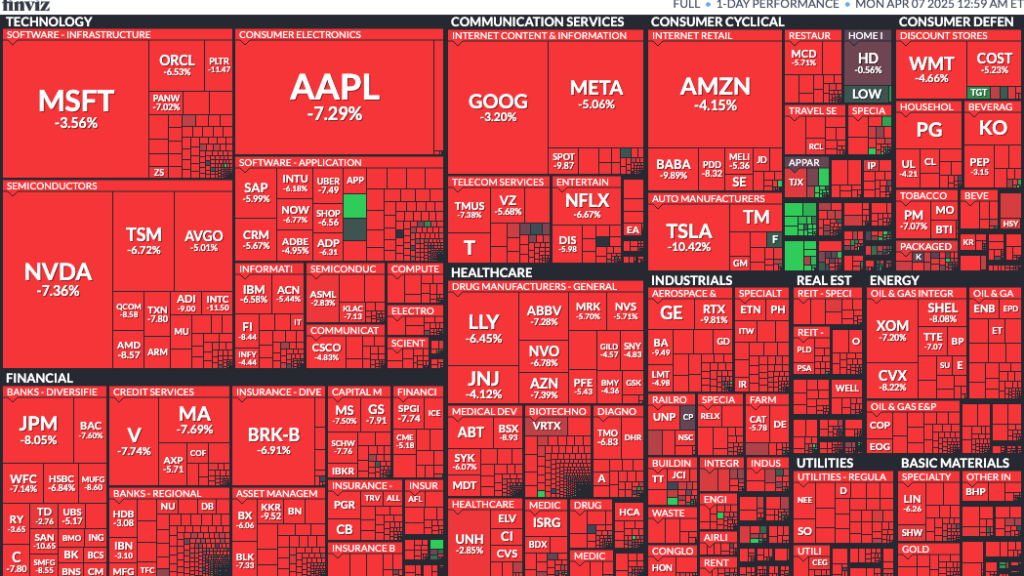
Kissing Trump’s Ass
On the 8th of April, through the chaos, President Trump remained optimistic, telling members of the Republican party at a dinner: “This is the largest transaction in the history of our country. These countries are calling us up, kissing my ass. They are dying to make a deal. ‘Please, please, sir, make a deal. I’ll do anything. I’ll do anything, sir.’“
He was sure to fire back at critics within the party. “And then I’ll see some rebel Republican, you know, some guy that wants to grandstand, say, I think the Congress should take over negotiations. Let me tell you, you don’t negotiate like I negotiate.”
On Truth Social, Trump would post reassuring supporters against the turmoil. “BE COOL! Everything is going to work out well. The USA will be bigger and better than ever before!” “Be Strong, Courageous, and Patient, and GREATNESS will be the result!”
While the White House claimed that 75 countries had called to negotiate, it would not name the ass-kissers. But India signalled talks on April 6, 2025 while Israel offered to remove all U.S. tariffs by April 7, 2025. Taiwan offered to increase U.S. imports and remove tariffs. Vietnam also offered to eradicate all U.S. import tariffs.
China Refuses to Kiss the Ring
Evidently, China wasn’t among the ass-kissers. On April 11, 2025, China raised its tariffs on U.S. goods to 125% in retaliation against Trump’s 145% tariff on Chinese goods.
This move was accompanied by a viral video featuring Mao Zedong from 1953, where he declared, “We are Chinese. We are not afraid of provocations. We don’t back down. No matter how long this war is going to last, we will never yield. We’ll fight until we completely triumph. It used to depend on President Truman, and it will depend on President Eisenhower or whoever becomes the next US president. It’s up to them.”
Shared by Chinese officials, including Foreign Affairs spokesperson Mao Ning on X, this video clearly signalled that China’ had no intentions of backing down. This retaliation, which the White House warned against, would turn the tariffs into a U.S. vs China tariff war.
( @realDonaldTrump – Truth Social Post )
— Donald J. Trump 🇺🇸 TRUTH POSTS (@TruthTrumpPosts) April 9, 2025
( Donald J. Trump – Apr 09, 2025, 1:18 PM ET )
Based on the lack of respect that China has shown to the World’s Markets, I am hereby raising the Tariff charged to China by the United States of America to 125%, effective immediately. At… pic.twitter.com/9Jikp9cqpy
4D Chess Move or Not
On the 9th of April, Trump announced a 90-day pause on the reciprocal tariffs above 10% for all countries except China. This backpedal followed intense market volatility and global outcry, with Trump explaining the reversal by claiming that countries were “jumping a little bit out of line” and “getting a little bit yippy, a little bit afraid.”
This u-turn was clearly to deflate market pressure and respond to diplomatic negotiations. Trump’s supporters, however, described it as a brilliant strategic plan. They suggested that Trump’s actions, which might seem chaotic or contradictory on the surface, were actually part of a deeper, more complex strategy that only he fully understands.
The Chinese Roll Out Memes
The Chinese broke out AI generated memes mocking America’s dreams of re-industrializing. They depicted obese Americans sitting in factories, sluggishly working their shifts and snacking intermittently. Other memes depicted penguins protesting Trump’s tariffs imposed on the remote and uninhabited island territories.
unprecedented protests this morning on heard and macdonald islands, as the population rises up against trump imposition of 10% across the board tariffs. pic.twitter.com/eOtsJ8uH5I
— ian bremmer (@ianbremmer) April 3, 2025
There’s No End In Sight
Trump will always have its way. Always. Even if it means inviting and unleashing chaos. On its own part, China says it won’t be backing down and for good reasons too. This means that there is no end in sight to this war.
Ultimately, however, it is consumers who will pay the price. The cost incurred by the companies would be passed down to them. This is the irony to it all. Trump’s reassurances that it is for the ultimate good will fall on deaf ears when realities begin to trickle in. Then, there are businesses that will deal with the uncertainty of not knowing what tariff moves President Trump would make next. Will the tariffs be back after 90 days? Or will they continue? No one can yet tell. It’s all left to Trump’s whims.
Whatever happens, we are certain that we’ve not seen the end of it. At least, not yet, We will be sure to update you on the twists and turns.
While you wait, read a chapter in the story of Nigeria’s failed attempt at industrialization: The Rise and Fall of Peugeot Automobile Nigeria.








